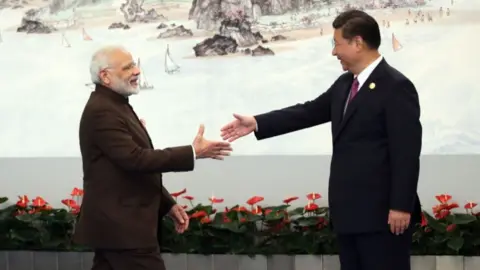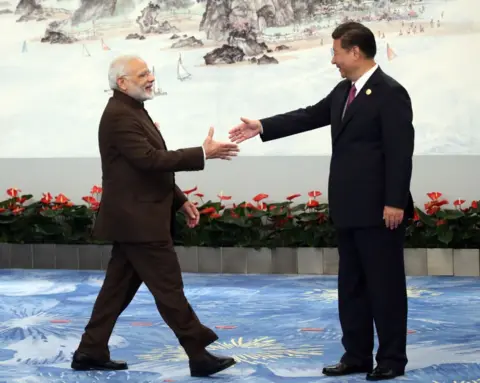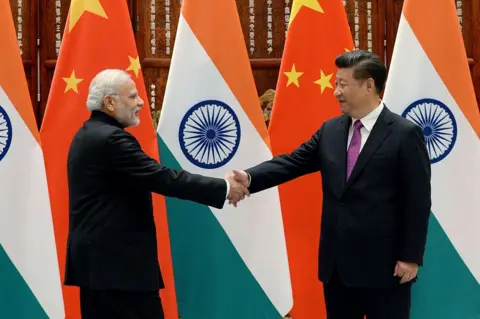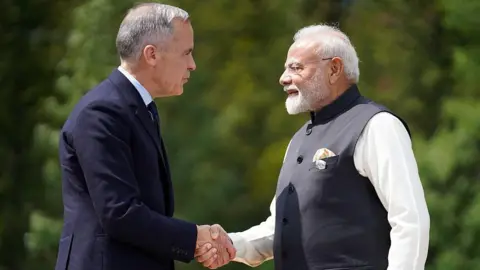Article Text:
A recent incident involving Italian luxury brand Prada has ignited discussions on the relationship between global fashion houses and India, a nation rich in artistic heritage that often remains unrecognized by international brands.
In June, models for Prada strutted down the Milan runway donning toe-braided sandals that bore a striking resemblance to the Kolhapuri chappal, a traditional leather shoe crafted for centuries in Kolhapur, Maharashtra. The omission of the footwear's cultural roots led to widespread criticism, prompting Prada to recognize the sandals’ origins and express a willingness to engage in dialogue with local artisans.
Following the uproar, a Prada team visited Kolhapur to meet with local shoemakers and explore the sandal-making process, indicating that potential collaborations with Indian manufacturers could be on the horizon. This willingness to communicate marks a significant shift in terms of acknowledging the craftsmanship that luxury brands tend to leverage without proper attribution.
Critics have long highlighted that established fashion labels frequently draw inspiration from Indian aesthetics, often neglecting the cultural meanings behind those traditions. Recent examples include controversies involving garments from Reformation and H&M, as well as a backlash against Dior for featuring traditional Indian embroidery in a collection without crediting its origins.
While some industry experts argue that not all cultural borrowing is malicious, they emphasize the need for respectful acknowledgment. Fashion writer Shefalee Vasudev points out the importance of design responsibility, arguing that neglecting to credit sources is akin to cultural disregard.
India's luxury market is projected to grow significantly, with analysts forecasting a rise to $14 billion by 2032, driven by a burgeoning middle class. However, some remain skeptical about global brands' genuine interest in the Indian market, with Technopak's chairman, Arvind Singhal, noting that many luxury labels still lack a strong connection with Indian consumers.
The perception that India serves primarily as a production hub rather than a market poses challenges for brands. Fashion designer Anand Bhushan noted that borrowing from cultural elements must be approached with a deep understanding of their history and significance, a sentiment shared by many in the industry.
Despite the complexities of the luxury market, some voice optimism that India shouldn't be overlooked, given the emergence of a younger, discerning consumer base. Nonita Kalra, editor-in-chief of Tata CliQ Luxury, states that while Prada's oversight may have been sincere, the broader issue stems from systemic cultural disconnects in the fashion industry.
The conversation around cultural appropriation continues to evolve, with Prada's misstep serving as a catalyst for more accountability within the industry. As global fashion brands face scrutiny, it presents an opportunity for India to embrace its rich heritage and advocate for local artisans.
Experts like Laila Tyabji from Dastkar emphasize that genuine change can only occur when the value of traditional crafts is recognized and respected within India itself, urging consumers to appreciate handmade artistry instead of defaulting to mass-produced goods. Real progress, Tyabji argues, requires not just external scrutiny but an internal cultural renaissance as well.
A recent incident involving Italian luxury brand Prada has ignited discussions on the relationship between global fashion houses and India, a nation rich in artistic heritage that often remains unrecognized by international brands.
In June, models for Prada strutted down the Milan runway donning toe-braided sandals that bore a striking resemblance to the Kolhapuri chappal, a traditional leather shoe crafted for centuries in Kolhapur, Maharashtra. The omission of the footwear's cultural roots led to widespread criticism, prompting Prada to recognize the sandals’ origins and express a willingness to engage in dialogue with local artisans.
Following the uproar, a Prada team visited Kolhapur to meet with local shoemakers and explore the sandal-making process, indicating that potential collaborations with Indian manufacturers could be on the horizon. This willingness to communicate marks a significant shift in terms of acknowledging the craftsmanship that luxury brands tend to leverage without proper attribution.
Critics have long highlighted that established fashion labels frequently draw inspiration from Indian aesthetics, often neglecting the cultural meanings behind those traditions. Recent examples include controversies involving garments from Reformation and H&M, as well as a backlash against Dior for featuring traditional Indian embroidery in a collection without crediting its origins.
While some industry experts argue that not all cultural borrowing is malicious, they emphasize the need for respectful acknowledgment. Fashion writer Shefalee Vasudev points out the importance of design responsibility, arguing that neglecting to credit sources is akin to cultural disregard.
India's luxury market is projected to grow significantly, with analysts forecasting a rise to $14 billion by 2032, driven by a burgeoning middle class. However, some remain skeptical about global brands' genuine interest in the Indian market, with Technopak's chairman, Arvind Singhal, noting that many luxury labels still lack a strong connection with Indian consumers.
The perception that India serves primarily as a production hub rather than a market poses challenges for brands. Fashion designer Anand Bhushan noted that borrowing from cultural elements must be approached with a deep understanding of their history and significance, a sentiment shared by many in the industry.
Despite the complexities of the luxury market, some voice optimism that India shouldn't be overlooked, given the emergence of a younger, discerning consumer base. Nonita Kalra, editor-in-chief of Tata CliQ Luxury, states that while Prada's oversight may have been sincere, the broader issue stems from systemic cultural disconnects in the fashion industry.
The conversation around cultural appropriation continues to evolve, with Prada's misstep serving as a catalyst for more accountability within the industry. As global fashion brands face scrutiny, it presents an opportunity for India to embrace its rich heritage and advocate for local artisans.
Experts like Laila Tyabji from Dastkar emphasize that genuine change can only occur when the value of traditional crafts is recognized and respected within India itself, urging consumers to appreciate handmade artistry instead of defaulting to mass-produced goods. Real progress, Tyabji argues, requires not just external scrutiny but an internal cultural renaissance as well.






















